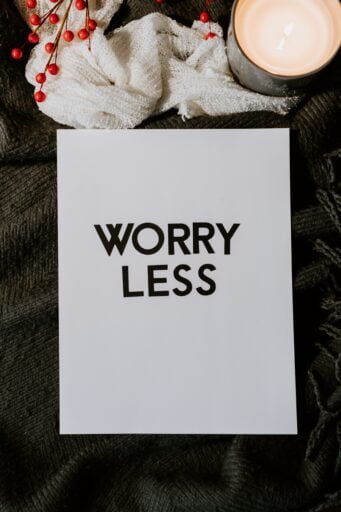Imagine feeling an overwhelming surge of fear and anxiety taking over your entire being, leaving you gasping for air and struggling to regain control. Panic attacks can be terrifying and debilitating, but there is hope. In this article, you will discover effective strategies and techniques to combat panic attacks, empowering you to regain a sense of calm and reclaim your life. By understanding the root causes of panic attacks and learning how to cope with the intense sensations they bring, you will be equipped with the tools to confidently navigate through moments of distress. Now, let us embark on this journey towards overcoming panic attacks, embracing a life filled with serenity and resilience.

Understanding Panic Attacks
What are Panic Attacks?
Panic attacks are intense episodes of fear and anxiety that come on suddenly and reach their peak within minutes. These attacks can be debilitating and overwhelming, causing significant distress and interfering with daily life. During a panic attack, you may experience physical symptoms such as a rapid heartbeat, shortness of breath, dizziness, and trembling. Additionally, you may feel a sense of impending doom or a loss of control.
Causes of Panic Attacks
Panic attacks can be caused by a variety of factors, including biological and environmental factors. Some individuals may be predisposed to panic attacks due to a family history of anxiety disorders. Traumatic or stressful life events, such as the loss of a loved one or a major life change, can also trigger panic attacks. Substance abuse, certain medical conditions, and imbalances in neurotransmitters in the brain can contribute to the development of panic attacks as well.
Symptoms of Panic Attacks
During a panic attack, you may experience a range of physical and psychological symptoms. Physical symptoms can include a pounding or racing heart, chest pain or discomfort, shortness of breath, dizziness or lightheadedness, trembling or shaking, sweating, chills or hot flashes, and a feeling of choking or being smothered. Psychological symptoms may include a fear of losing control or going crazy, a sense of impending doom or danger, feeling detached from oneself or reality, and overwhelming anxiety or fear.
Recognizing Triggers
Identifying Personal Triggers
To effectively manage panic attacks, it is crucial to identify your personal triggers. Triggers can vary from person to person, but common triggers include specific phobias, stressful situations, crowded places, certain smells or sounds, and past traumatic experiences. By becoming aware of your triggers, you can begin to take proactive steps towards avoiding or minimizing their impact on your well-being.
Avoiding Panic Attack Triggers
Once you have identified your triggers, it is important to take steps to avoid them whenever possible. This may involve making changes to your daily routine, setting boundaries with certain people or situations, or learning strategies to cope with unavoidable triggers. Avoiding triggers can help prevent panic attacks from occurring and minimize their frequency and intensity.
Creating a Safe Environment
In addition to avoiding triggers, creating a safe and supportive environment can be instrumental in managing panic attacks. This may involve ensuring your physical surroundings are calming and comfortable. Consider making adjustments such as reducing clutter, incorporating soothing colors, and creating a space for relaxation and self-care. Surrounding yourself with supportive and understanding individuals who can help during moments of distress can also contribute to a safe environment.
Breathing Techniques
Diaphragmatic Breathing
Diaphragmatic breathing, also known as belly breathing, is a relaxation technique that can help alleviate the symptoms of panic attacks. To practice diaphragmatic breathing, sit or lie down in a comfortable position. Place one hand on your chest and the other on your abdomen. Take a slow, deep breath in through your nose, allowing your abdomen to rise as you fill your lungs with air. Exhale slowly through your mouth, focusing on fully emptying your lungs. Repeat this deep breathing exercise several times, allowing your body to relax with each breath.
Deep Breathing
Deep breathing exercises can help regulate your breathing, reduce anxiety, and promote a sense of calm during a panic attack. Begin by finding a comfortable position, either sitting or lying down. Take a slow, deep breath in through your nose, allowing your abdomen and chest to expand. Hold your breath for a few seconds, and then exhale slowly through your mouth, focusing on releasing any tension or anxiety. Repeat this deep breathing pattern for a few minutes, allowing your body to gradually relax and restore a sense of equilibrium.
4-7-8 Breathing Method
The 4-7-8 breathing method is a technique that can help interrupt the cycle of panic during an attack. First, find a comfortable position and close your eyes. Take a deep breath in through your nose for a count of four. Hold your breath for a count of seven. Finally, exhale slowly through your mouth for a count of eight. Repeat this breathing pattern several times, allowing the deep inhales and extended exhales to calm your nervous system and restore a sense of balance.
Mindfulness and Meditation
Practicing Mindfulness
Mindfulness involves paying attention to the present moment and cultivating a nonjudgmental awareness of your thoughts, feelings, and sensations. By practicing mindfulness regularly, you can develop a greater sense of self-awareness and enhance your ability to cope with panic attacks. Simple mindfulness exercises include focusing on your breath, engaging your senses by noticing the sights and sounds around you, and participating in activities with full presence and attention.
Meditation Techniques
Meditation is a powerful tool for managing panic attacks and reducing anxiety. There are various meditation techniques that can be beneficial, including guided meditation, mantra meditation, and loving-kindness meditation. Guided meditation involves listening to an instructor or using an app that leads you through a series of relaxation exercises and visualizations. Mantra meditation involves repeating a calming phrase or word silently or out loud. Loving-kindness meditation focuses on cultivating feelings of compassion and well-wishing towards yourself and others.
Mindful Body Scan
The mindful body scan is a meditation practice that involves systematically bringing awareness to different parts of your body. Start by finding a comfortable position, either sitting or lying down. Close your eyes and focus your attention on your breathing. Begin to slowly scan your body from head to toe, noticing any areas of tension or discomfort. As you become aware of these sensations, intentionally release any tension and cultivate a sense of ease and relaxation. Move your attention through each part of your body, allowing yourself to fully experience the sensations and bring a sense of mindfulness to every inch of your being.

Positive Self-Talk
Identify Negative Thoughts
Negative thoughts often contribute to the intensity of panic attacks. Identifying and challenging these negative thoughts is crucial in managing panic attacks effectively. Start by paying attention to the thoughts that arise during panic attacks and the accompanying emotions. Common negative thoughts may include catastrophic thinking, assuming the worst possible outcome, or a distorted perception of danger. Becoming aware of these negative thought patterns enables you to take steps towards reframing them in a more positive and realistic light.
Reframe Negative Thoughts
Once you have identified negative thoughts, practice reframing them into more positive and realistic statements. This involves challenging the accuracy and validity of your negative thoughts and replacing them with more balanced and rational alternatives. For example, if your negative thought is, “I’m going to die,” you can reframe it to, “This is a panic attack and it will pass. I have successfully managed panic attacks in the past.” By reframing negative thoughts, you can interrupt the cycle of panic and reduce its impact on your well-being.
Affirmations and Mantras
Affirmations and mantras are powerful tools for promoting positive self-talk and building resilience in the face of panic attacks. Affirmations are positive statements that you can repeat to yourself, such as “I am strong and capable” or “I am safe and supported.” Mantras are short, meaningful phrases that you can silently repeat to yourself during moments of distress, such as “I am calm and centered” or “I choose peace over panic.” By incorporating affirmations and mantras into your daily routine, you can empower yourself and cultivate a more positive mindset.
Progressive Muscle Relaxation
Progressive Muscle Relaxation Technique
Progressive muscle relaxation is a technique that involves sequentially tensing and then relaxing different muscles groups in your body. This practice helps release tension and promote relaxation during a panic attack. Start by finding a comfortable position and take a few deep breaths to center yourself. Beginning with your toes, tense the muscles in that area and hold for a few seconds before releasing and allowing the muscles to relax fully. Move progressively through each muscle group, working your way up from your feet to your head, tensing and relaxing the muscles as you go.
Body Scan Technique
The body scan technique is a form of progressive muscle relaxation that involves systematically bringing attention to each part of your body. Start by finding a comfortable position and close your eyes. Begin by directing your attention to your toes, then slowly move your focus up through your feet, ankles, shins, and so on, until you reach the top of your head. As you bring awareness to each body part, relax the muscles and release any tension or discomfort that you may be holding. This practice helps promote deep relaxation and a sense of calm.
Visualization
Visualization involves using your imagination to create peaceful and calming mental images during a panic attack. By visualizing serene scenes or experiences, you can help divert your attention away from the panic and shift your focus to a more positive and relaxing state. Close your eyes and imagine yourself in a place where you feel safe and at ease. It could be a beautiful beach, a tranquil forest, or a cozy room. Allow yourself to fully engage your senses in the visualization, noticing the colors, sounds, and sensations that surround you. Visualization can be a powerful tool to help you find peace and relaxation amidst panic.

Cognitive Behavioral Therapy (CBT)
Understanding CBT
Cognitive Behavioral Therapy (CBT) is a widely recognized and effective approach to treating panic attacks and other anxiety disorders. CBT focuses on identifying and changing unhelpful thought patterns and behaviors that contribute to panic attacks. By examining the relationship between your thoughts, feelings, and behaviors, CBT helps you develop healthier coping mechanisms and adopt more realistic and adaptive ways of thinking.
Identifying Unhelpful Thoughts
A key component of CBT for panic attacks is identifying unhelpful thoughts that contribute to anxiety and panic. These thoughts often involve catastrophizing, overestimating danger, or engaging in black-and-white thinking. By becoming aware of these unhelpful thoughts, you can challenge their accuracy and validity, and develop more balanced and rational thinking. The goal is to replace these negative thoughts with more positive and constructive ones, reducing the intensity and frequency of panic attacks.
Replacing Negative Thoughts
Once you have identified unhelpful thoughts, CBT helps you replace them with more realistic and positive thoughts. This process involves examining the evidence for and against your negative thoughts, recognizing cognitive distortions, and reframing your thinking in a more balanced and constructive way. For example, if your negative thought is, “I’m not capable of handling this situation,” you can reframe it to, “I may feel anxious, but I have successfully coped with similar situations in the past.” By replacing negative thoughts, CBT empowers you with healthier perspectives and coping strategies.
Seeking Professional Help
Finding a Therapist
If you are struggling with panic attacks, seeking professional help is an important step towards recovery. A therapist specializing in anxiety disorders and panic attacks can provide guidance, support, and evidence-based treatments to help you manage and overcome your symptoms. When searching for a therapist, consider their credentials, experience, and approach to treatment. It is also important to find a therapist with whom you feel comfortable and safe in discussing your feelings and experiences.
Types of Therapy for Panic Attacks
There are various types of therapy that can be effective in treating panic attacks. Cognitive Behavioral Therapy (CBT) is a widely recommended and research-supported treatment for panic attacks. Other therapeutic approaches, such as Acceptance and Commitment Therapy (ACT) and Exposure Therapy, can also be beneficial. The choice of therapy depends on individual preferences and needs. It is important to work collaboratively with your therapist to develop a treatment plan that suits your specific goals and circumstances.
Medication Options
In some cases, medication may be recommended to help manage severe or persistent panic attacks. Antidepressants, such as selective serotonin reuptake inhibitors (SSRIs) or benzodiazepines, may be prescribed to alleviate symptoms and stabilize mood. It is essential to consult with a psychiatrist or healthcare provider to discuss the potential benefits and risks of medication and to determine the appropriate course of treatment for your individual situation. Medication is often used in conjunction with therapy to provide comprehensive support and symptom relief.
Lifestyle Changes
Regular Exercise
Engaging in regular physical exercise is an effective way to reduce anxiety and improve overall well-being, including managing panic attacks. Exercise releases endorphins, the body’s natural mood-boosting chemicals, and promotes a sense of relaxation and calm. Aim for at least 30 minutes of moderate-intensity exercise, such as brisk walking, swimming, or cycling, on most days of the week. Find activities that you enjoy and make them a regular part of your routine to experience the mental and physical benefits.
Healthy Diet
Maintaining a balanced and nutritious diet can also contribute to managing panic attacks. Avoiding excessive caffeine, alcohol, and sugary foods can help stabilize your mood and energy levels. Instead, focus on incorporating whole foods, such as fruits, vegetables, lean proteins, and whole grains, into your meals. These foods provide essential nutrients and can support overall mental and physical health. Additionally, staying hydrated by drinking plenty of water throughout the day is important for optimal brain function and emotional well-being.
Stress Management Techniques
Learning and practicing stress management techniques can greatly assist in managing panic attacks. Consider incorporating activities such as yoga, tai chi, or meditation into your daily routine. These practices promote relaxation and help reduce anxiety. Engaging in hobbies, spending time with loved ones, and finding activities that bring you joy and help you unwind are also important for managing stress. Remember to prioritize self-care and make time for activities that nourish your mind, body, and soul.
Developing Coping Strategies
Identifying Coping Mechanisms
Developing effective coping strategies is crucial in managing and overcoming panic attacks. Identifying healthy coping mechanisms can help you navigate and mitigate the impact of panic attacks. Some individuals find relief from engaging in creative outlets, such as writing, painting, or playing music. Others find solace in physical activities like running, hiking, or dancing. Experiment with different coping mechanisms to discover what works best for you and incorporate them into your daily life as part of your self-care routine.
Creating a Panic Attack Toolkit
Creating a panic attack toolkit can provide you with easy access to tools and techniques that can help during moments of distress. Include items such as stress balls, sensory objects, calming music or playlists, grounding exercises, and coping cards with positive affirmations and breathing exercises. Keep your toolkit readily available, whether it’s in your bag, at your desk, or in a specific drawer at home. Having these resources accessible can provide a sense of comfort and empowerment during a panic attack.
Practice Coping Techniques
Consistent practice of coping techniques is essential in managing panic attacks effectively. Set aside time each day to practice breathing exercises, meditation, or mindfulness techniques, even when you are not experiencing a panic attack. This regular practice strengthens your ability to implement these techniques during moments of distress, making them more readily available and effective. By making coping techniques a regular part of your routine, you can build resilience and enhance your overall well-being.
In conclusion, understanding panic attacks, recognizing triggers, developing coping strategies, and seeking professional help when needed are key components in effectively managing and overcoming panic attacks. By implementing breathing techniques, practicing mindfulness and meditation, engaging in positive self-talk, utilizing progressive muscle relaxation, receiving cognitive-behavioral therapy, making lifestyle changes, and developing coping strategies, individuals can reduce the frequency and intensity of panic attacks and regain control over their lives. Remember, you are not alone in this journey, and with the right tools and support, you can overcome panic attacks and live a fulfilling and anxiety-free life.